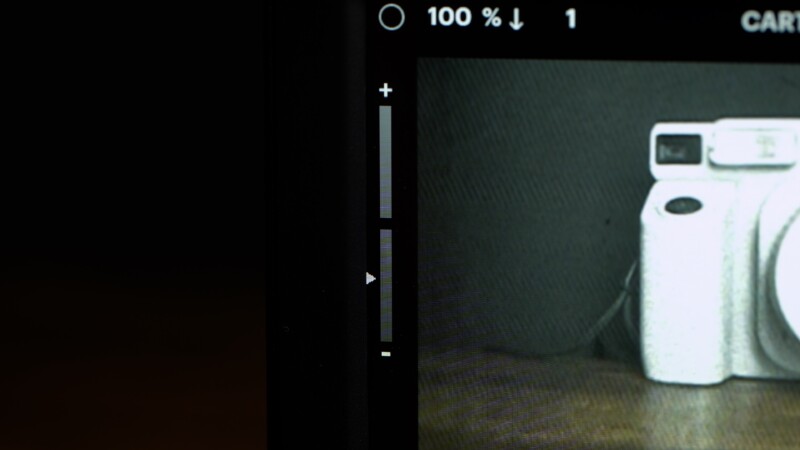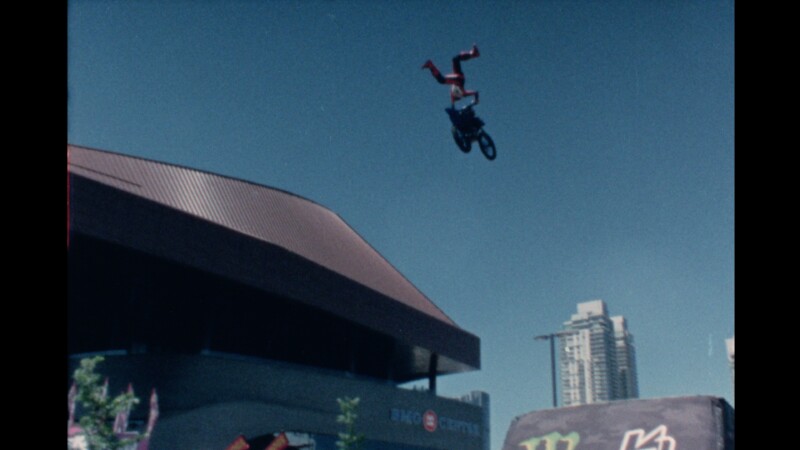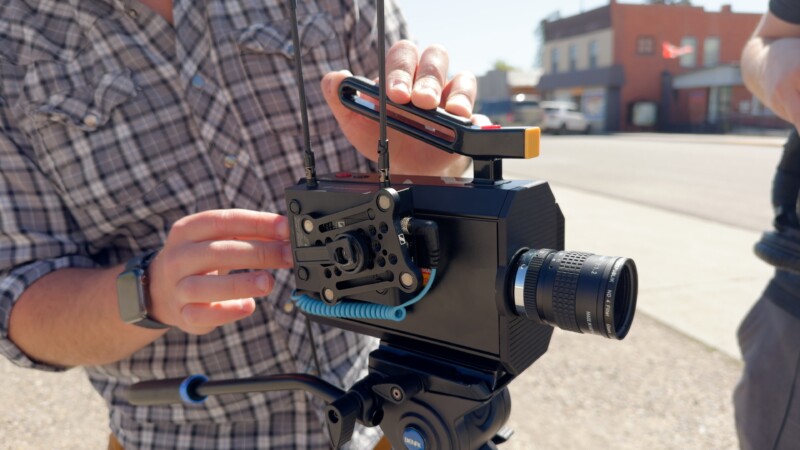Kodak Super 8 Camera Review: Does This Make Any Sense?
If I told you that Kodak just released a new camera that shoots Super 8 film but has a digital LCD, an SD card slot, and it costs $5,500, you’d probably be as confused as I was. But the Kodak Super 8 Camera has arrived and I’m going to try and make sense of it.
Kodak has been talking about this camera for almost a decade (it was finally announced as available last year and we waited over half a year more to see it) and I have to admit, I never expected it to see the light of day. To put it in perspective, it was first seen at CES in 2016 and was originally expected to cost $2,000. But finally, I did get a production model to test which allowed me to shoot part of a PetaPixel review episode and a variety of subjects with it over a couple of weeks (until I ran out of film) and it’s given me a good idea where this camera excels and where it’s straight up baffling.

Kodak Super 8 Camera Review: Design
The Kodak Super 8 Camera takes standard Super 8 film, which it can shoot between 18 and 36 frames per second (FPS). Super 8 film has a surface area much smaller than a mirrorless camera — it’s more in line with what we see on a modern smartphone. This means the footage is grainy and prone to diffraction, but it certainly has a unique look. It also makes a truly wonderful sound when the camera is rolling and cutting. The Kodak has a standard C-Mount for swapping lenses and comes with quite a nice Ricoh 6mm f/1.2 lens.

The design of the Kodak Super 8 is very reminiscent of an old Bolex camera, with a record button and custom button on top, a top handle with a second record button, and a removable base handle with another record button. There is also a 2.5mm LANC input if you want to trigger the camera remotely. It’s a chonky boy though, weighing in at 1,430 grams with the included lens. There is a proprietary battery inside which can only be charged through the flimsy and outdated Micro USB port on the camera and it takes about three hours to fully charge. That said, battery life is excellent. After shooting three rolls of film for our Instax Wide 400 review, we still had 70% battery left. Kodak says you should expect to get ten rolls to a charge and that seems very possible.

There are a few modern features that set the Kodak camera apart from all the other Super 8 cameras you can easily find on the used market. First, this camera uses a digital LCD that allows you to frame and meter your shots. There is a small camera built in by the lens mount that sends an admittedly low-resolution video to the large four-inch LCD screen. The advantage here is you can shoot above your head and low-angle shots easily, much like a modern digital camera. Traditional Super 8 cameras require you to keep your eye on an optical viewfinder or camera-mounted frame lines, so Kodak’s new camera has a huge advantage.

Kodak Super 8 Camera Review: Usability
While the display is quite sharp (though I couldn’t get actual resolution details from Kodak) the video feed is such low quality, especially while rolling, that it’s tough to confirm focus. I had plenty of out-of-focus shots, even with the deep depth of field Super 8 offers, and found myself mostly using hyperfocal techniques to get solid results. Also, the exposure you see on the screen does not represent what is actually being captured. For that, there is a built-in spot meter with an exposure meter on the side of the frame. It takes a bit of practice to remember to check this, but nearly all my shots were adequately exposed when trusting this meter.

I was excited that the camera offers an HDMI output, less so when I learned that it is through a fragile micro HDMI port. The odd thing about this connection is that it only outputs the video feed, not the other on-screen assist tools. I could send out a feed to the director for them to check my frame, but if I wanted to use a larger monitor or EVF, I could not see my meter, any camera settings, or move through the menus. Hopefully, this can and will be fixed in firmware updates.

Speaking of menus, these are where you can see the full resolution of the LCD and they’re sharp, easy to understand, and well laid out. The odd thing is that going through them requires the use of a touch wheel and center button similar to the original iPods. However, Kodak’s implementation is nowhere near as responsive as that of twenty-year-old Apple tech. I found myself constantly trying multiple swipes to move through the menus only to overshoot my target. I can only imagine the frustration if I was on a time-sensitive documentary and needed to quickly change a camera setting.

The other major innovation is that the Kodak Super 8 Camera can record audio right to an SD card for easy syncing. You can set audio levels and have them displayed on screen while rolling. This uses the metadata of each film reel you record on and makes syncing an absolute breeze. There is also a headphone jack for monitoring. The weird thing though is, there is no place to actually mount a microphone or receiver. There is no cold shoe or even a 1/4″-20 thread for an adapter. I wound up using Rycote stickies to attach both a shotgun mic and wireless receiver to the side of the camera body but this is hardly ideal.

Kodak Super 8 Camera Review: In Use
I wanted to get the opinion of someone with more experience using Super 8 cameras, especially on set. To that end, I was joined on a shoot by my friend and Calgary film community legend Alex Mitchell on our shoot to see if had any additional insights on the camera. One thing Alex immediately highlighted was that the tripod mount is offset from the lens mount, which will make it difficult to use a simple matte-box rig for filters. The lack of any mounting points on the camera re-affirms that this camera is not intended for use with other common accessories.

Alex was impressed with the accuracy of the built-in light meter, although we both wish it was more responsive. There is a delay in updating that can often cause the operator to over or under-expose, and then correct. In terms of the registration — the stability of the footage — Alex found it to be unexceptional and in line with what he sees from many decades-old Super 8 models.

One potentially compelling reason to purchase a Kodak Super 8 Camera over a used model is that it does have a warranty. Keep in mind this is for one year or 1,000 feet of film. This is equivalent to 20 rolls of Super 8, and to put that in perspective, that is only 50 minutes of captured footage. I suspect most users will shoot well over that warranty limitation before their first year is up.

The Kodak Super 8 is at Times Baffling and at Others Heartwarming
There are a huge number of limitations with this camera, yet I still had a fantastic time with it. I suspect that’s because this camera is really designed to be used as a run-and-gun tool, relying on the built-in light meter for exposure, sending audio right to an SD card for easy syncing, and not relying on it to interface properly with other filmmaking equipment. For that reason, Alex and I both agreed this is best used as a “fun” camera for casual shooting, albeit one that costs $5,500.

I think it would be easy to put together a checklist for a second version to make it a much more compelling product. Add mounting points like a cold shoe, and some 1/4”-20 mounts for accessories, improve the quality of the video feed, align the tripod screw with the lens mount, ditch the touch wheel, add full-size ports, and allow camera settings to be output through the HDMI. Do those few things and this theoretical Kodak Super 8 Camera 2.0 becomes a much more flexible filmmaking tool.

Finally, I do want to say that I found tremendous value in using the Super 8 film itself. The comments on our recent Fujifilm Instax Wide 400 review (a portion of which was shot on the Kodak camera) were overwhelmingly positive. I had enough film left to shoot some home-movie-style footage, and that has a distinctive look that I found surprisingly powerful. For that reason, I hope the Kodak camera is successful and leads to a more well-rounded and affordable version in the future.
Are There Alternatives?
As far as new motion picture cameras go, no, the Kodak Super 8 Camera is the only one you’re going to find. That said, there certainly are plenty of options on the used market that are more affordable.
Should You Buy It?
Probably not, no. This camera is ideal for single operators looking to experiment with film but still make use of several useful modern features. However, the price puts it out of reach of those who would most enjoy the unique experience this camera offers.